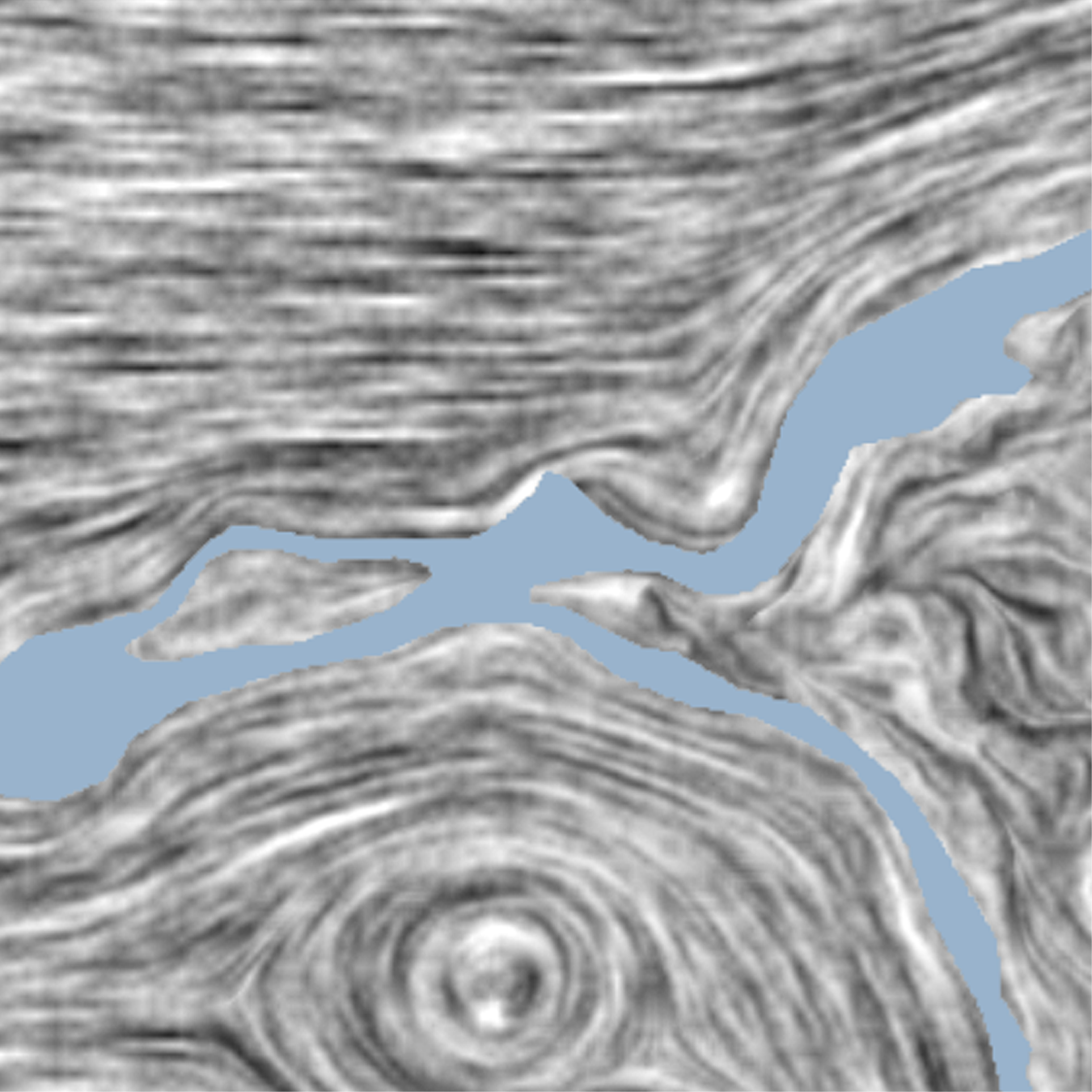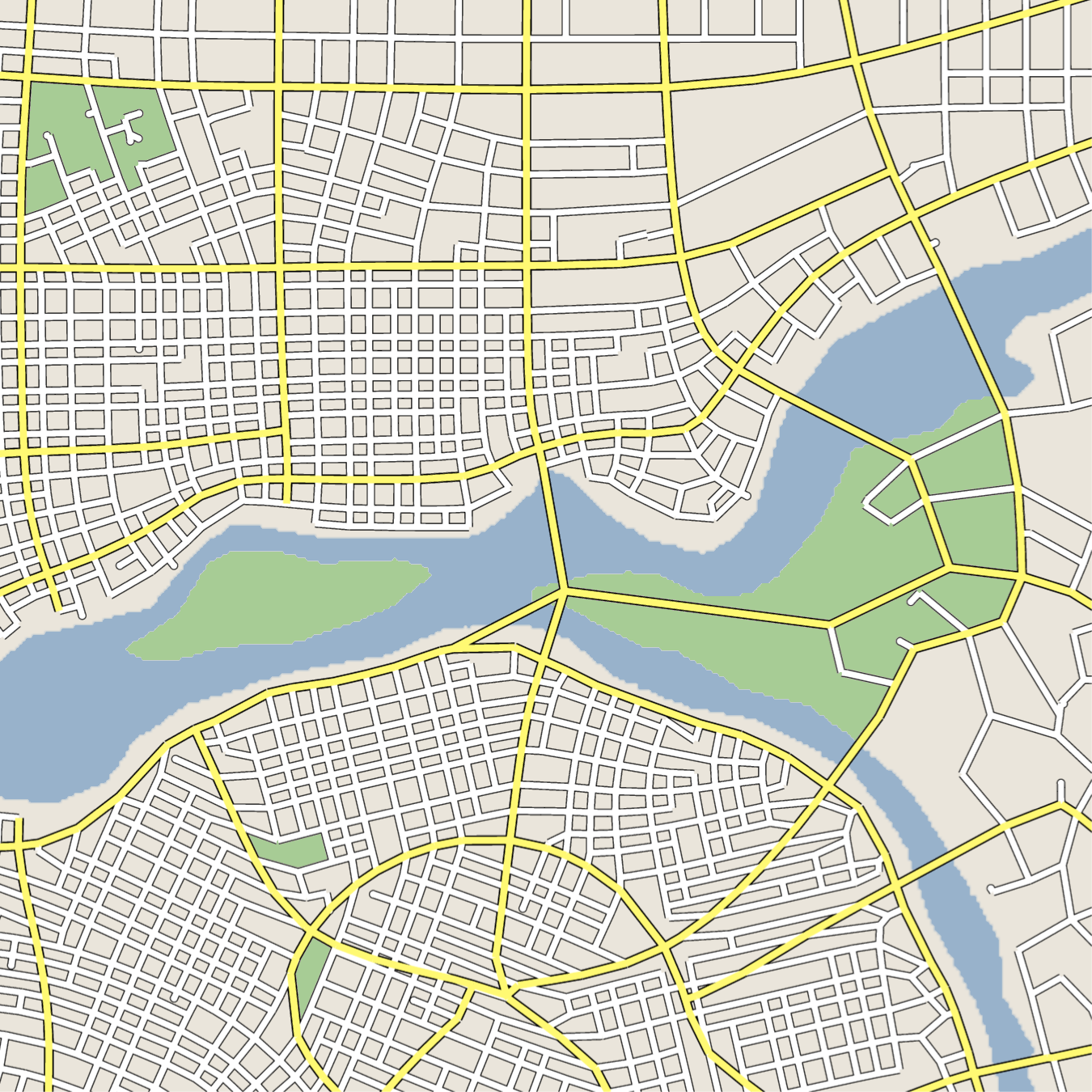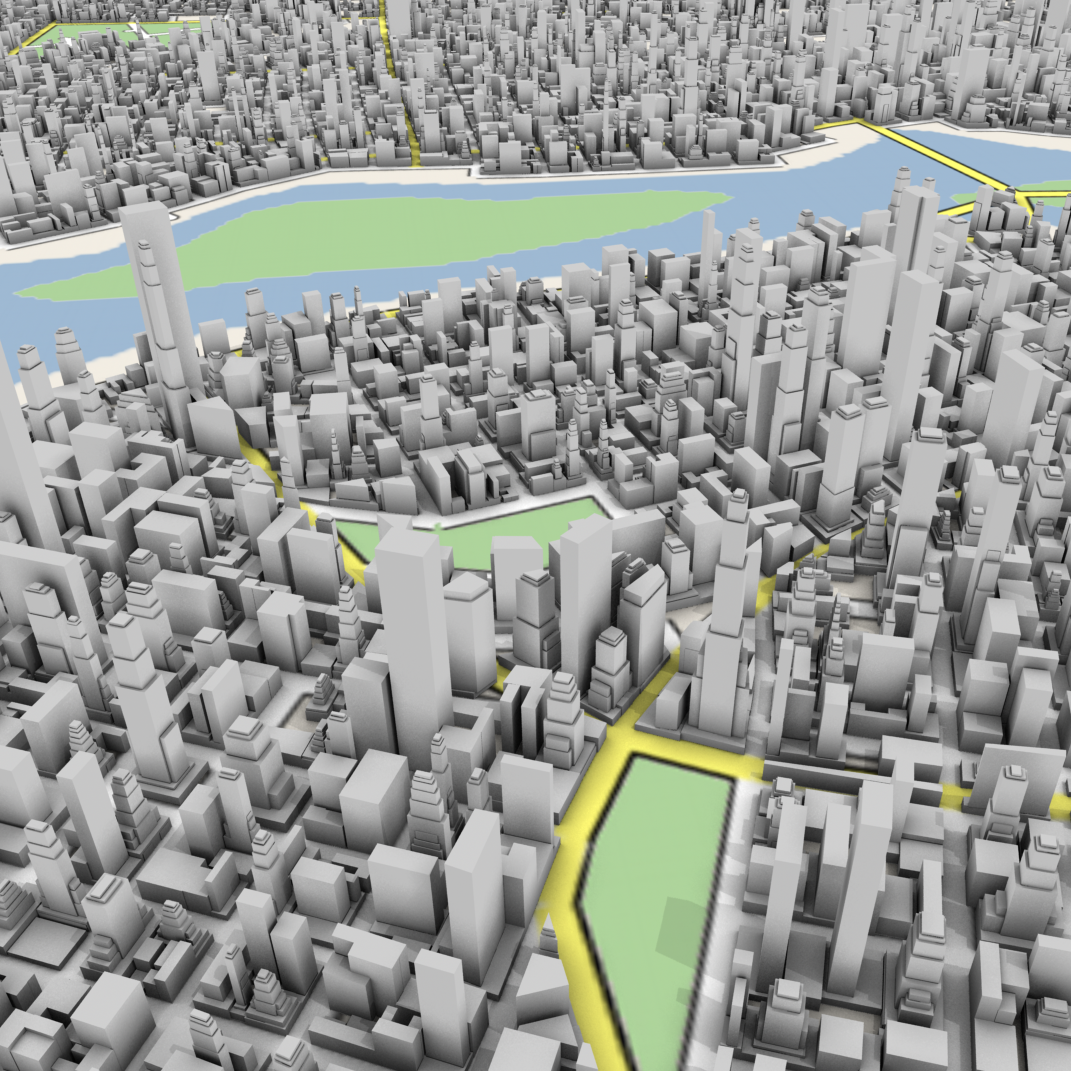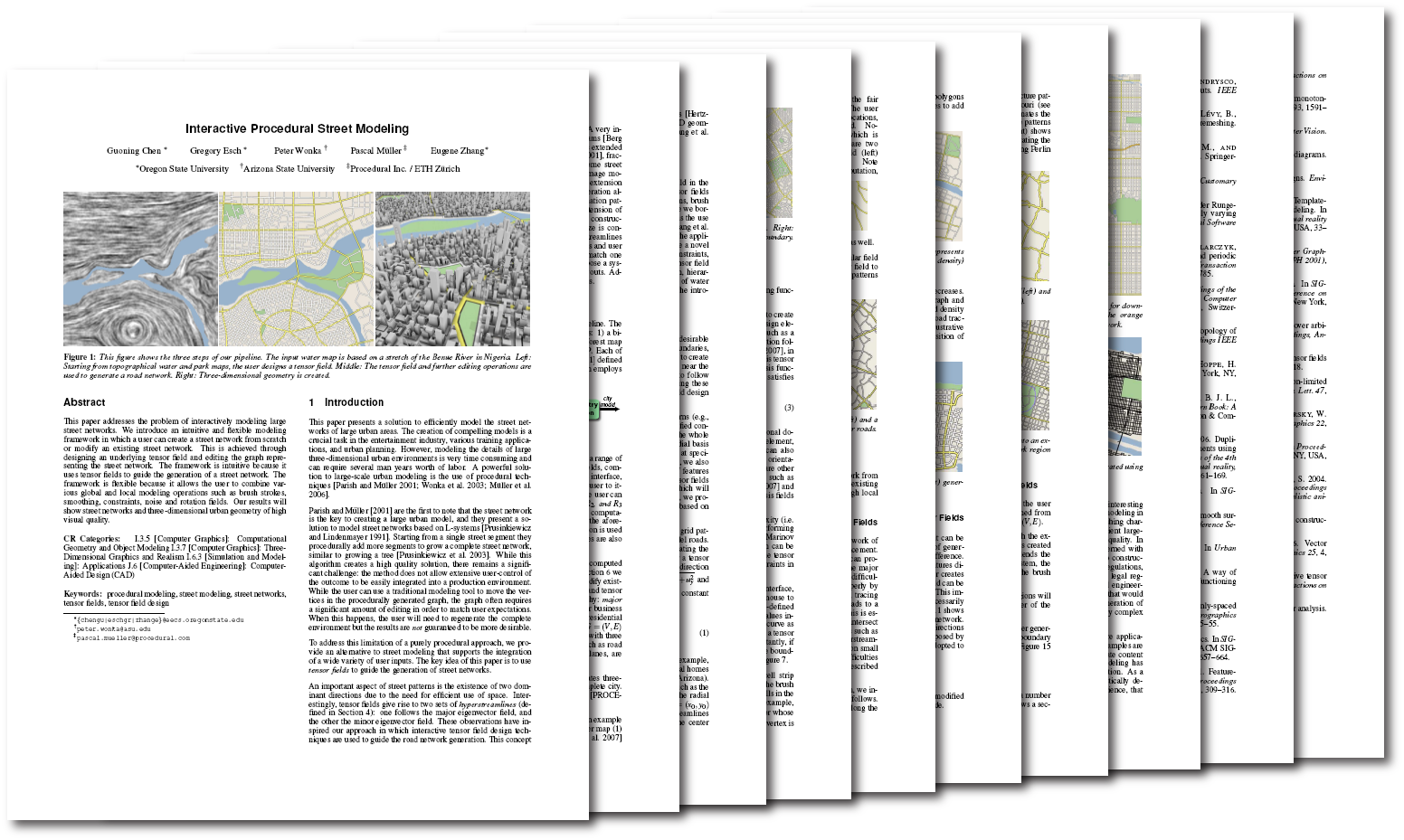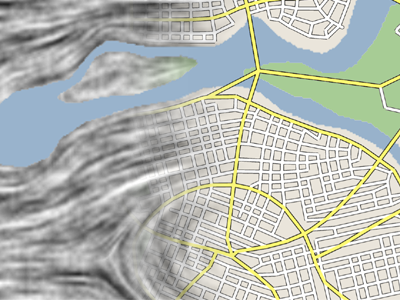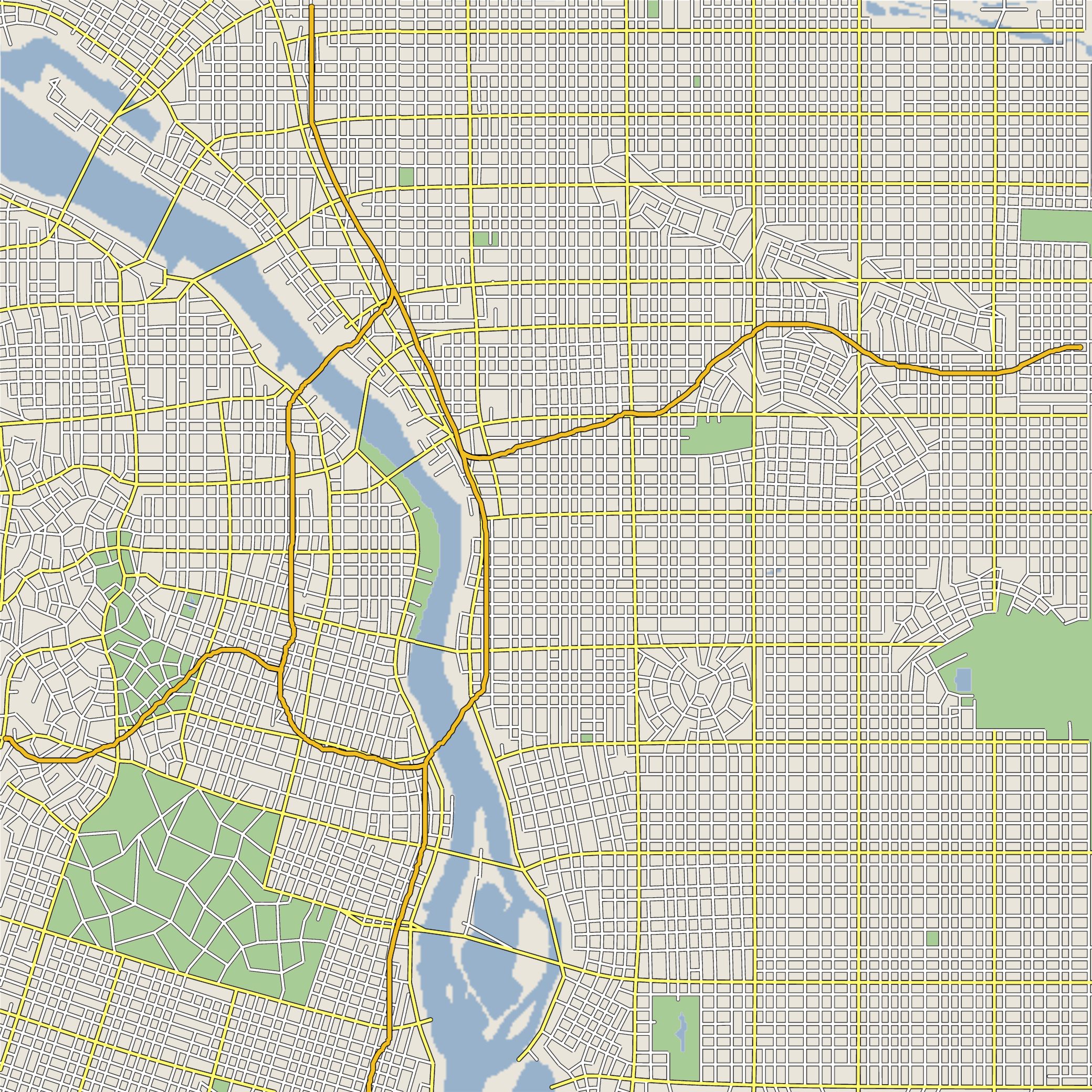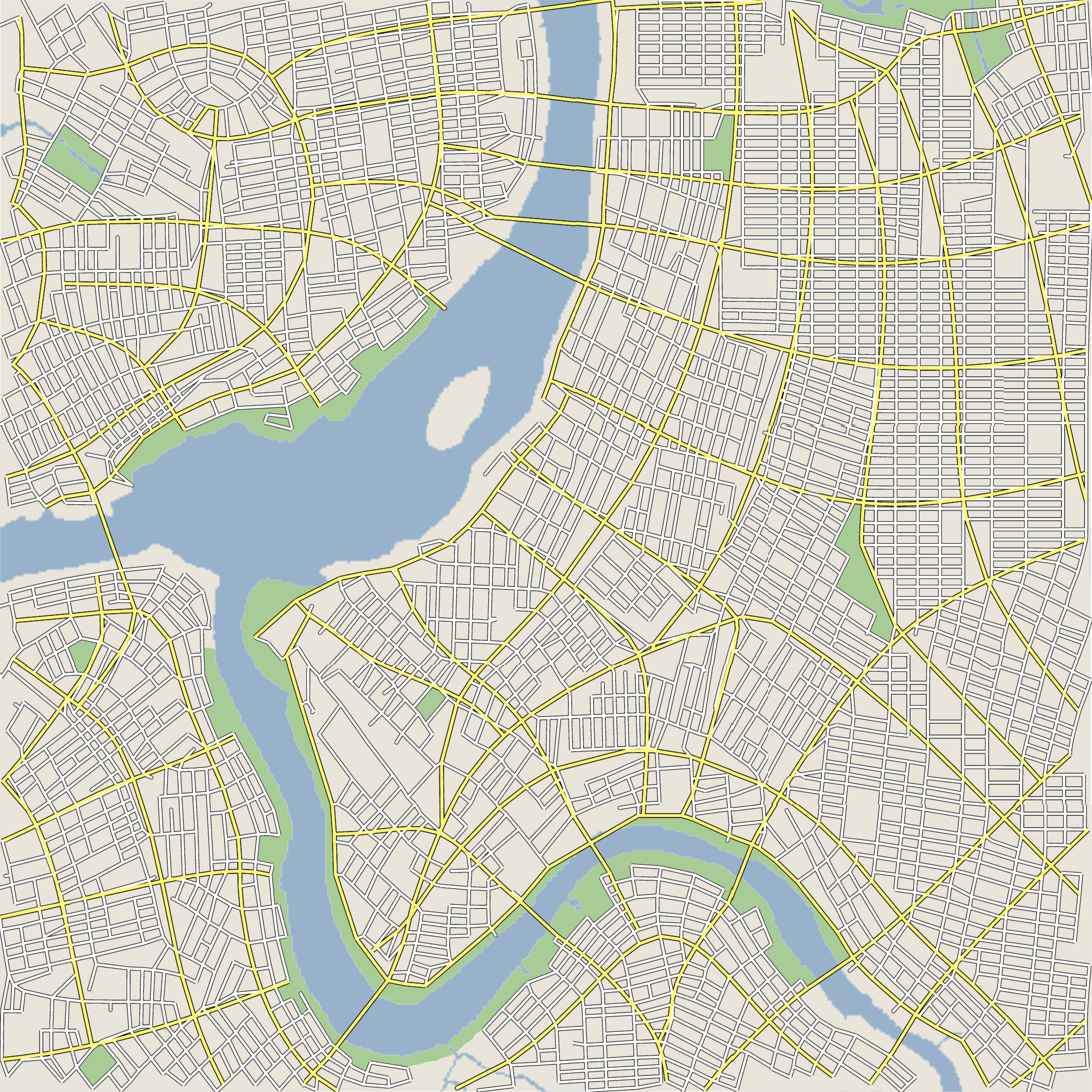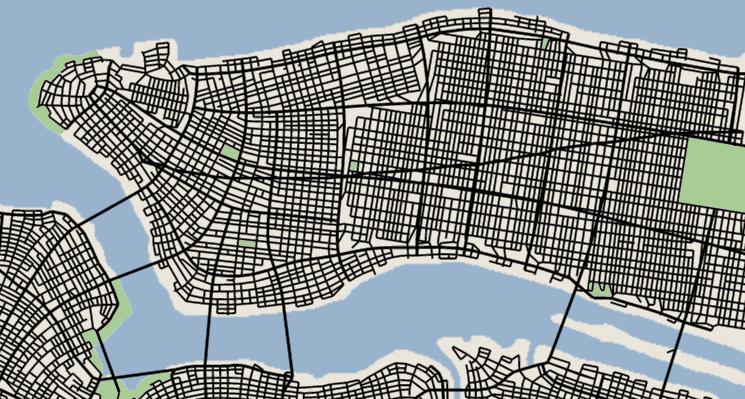Interactive Procedural Street Modeling
ACM Transaction on Graphics (Proceedings of SIGGRAPH 2008)
Guoning Chen1, Gregory Esch1, Peter Wonka2, Pascal Mueller3 and Eugene Zhang1
3 Procedural Inc. / ETH Zurich
This figure shows the three steps of our pipeline. The input water map is based on a stretch of the Benue River in Nigeria. Left: Starting from topographical water and park maps, the user designs a tensor field. Middle: The tensor field and further editing operations are used to generate a road network. Right: Three-dimensional geometry is created.
|
Abstract |
This paper addresses the problem of interactively modeling large street networks. We introduce an intuitive and flexible modeling framework in which a user can create a street network from scratch or modify an existing street network. This is achieved through designing an underlying tensor field and editing the graph representing the street network. The framework is intuitive because it uses tensor fields to guide the generation of a street network. The framework is flexible because it allows the user to combine various global and local modeling operations such as brush strokes, smoothing, constraints, noise and rotation fields. Our results will show street networks and three-dimensional urban geometry of high visual quality. |
|
Paper |
Acrobat [pdf (5MB)] |
|
Bibtex entry |
@ARTICLE{Chen:Street:2008,
pages = {Article 103: 1-10}, |
|
Video |
|
|
Results |
Here are some street networks generated using our system.
In our experiments, a city with reasonable complexity can be modeled within five minutes, but required an additional thirty to sixty minutes to fine tune the details and to experiment with different designs.
Downtown Portland, OR, USA Downtown Taipei & nbsp; Manhattan of NY, USA |
|
Siggraph Presentation |
Slides in pptx format Slides in pdf format |
|
Source code |
The source code (and a short manual) of this project is available [here]. It was written using C++ and compiled under Visual Studio 2005 and later. The code has been as it was since the publication of the paper. I would be happy to help if you want to re-implement this work. |
|
Acknowledgment |
Andreas Ulmer for generating the 3D geometry of the city scene
William Brendel for valuable discussion
Madhusudhanan Srinivasan for video production
Patrick Neill for video production
NSF ODOT NGA |
